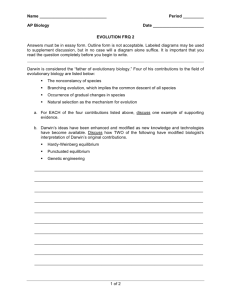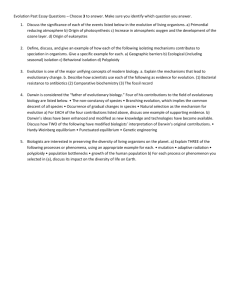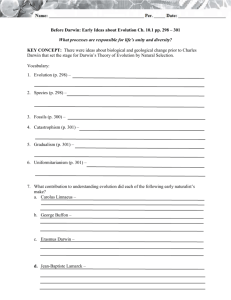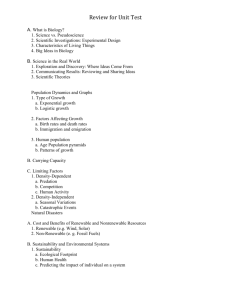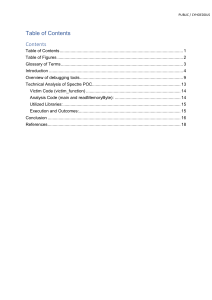Darwin's Spectre: Evolutionary Biology in the Modern World Farber, Paul Lawrence
advertisement
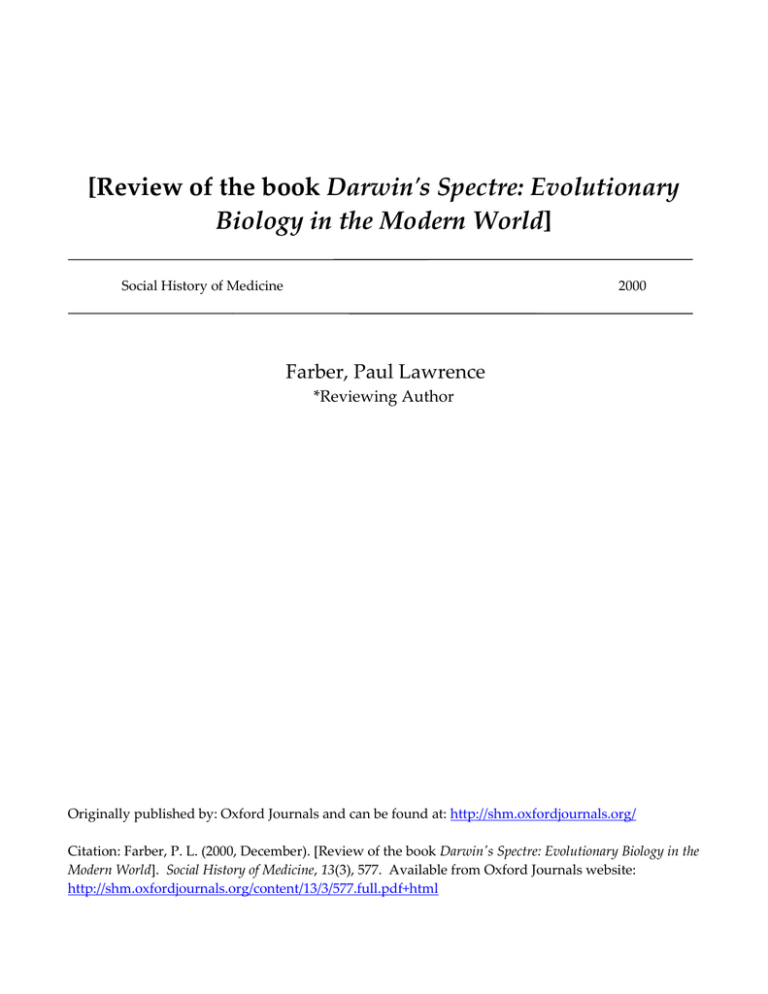
[Review of the book Darwin's Spectre: Evolutionary Biology in the Modern World] Social History of Medicine 2000 Farber, Paul Lawrence *Reviewing Author Originally published by: Oxford Journals and can be found at: http://shm.oxfordjournals.org/ Citation: Farber, P. L. (2000, December). [Review of the book Darwin's Spectre: Evolutionary Biology in the Modern World]. Social History of Medicine, 13(3), 577. Available from Oxford Journals website: http://shm.oxfordjournals.org/content/13/3/577.full.pdf+html Book Reviews 577 Michael R . Rose, Darwin's Spectre: Evolutionary Biology in the Modern World, Princeton: Princeton University Press, 1998. Pp. x + 233. £22.95. ISBN 0-691-01217-2. PAUL LAWRENCE FARBER Oregon State University Downloaded from shm.oxfordjournals.org at Oregon State University on December 13, 2010 Michael Rose, an evolutionary biologist at the University of California, Irvine, has made his reputation doing research on the biology of ageing. The Princeton University Press stands as one of the major American university presses and has published esoteric monographs as well as collected works of major authors (e.g. Carl Jung). Darwin's Spectre, therefore, will be all the more disappointing, for readers might expect an evolutionary world view (a la E. O. Wilson), an evaluation of those already published, or some argument about the place of evolution in modern thought. Instead, we have a volume ostensibly for 'the general reader', but in fact a piece of pop-Darwinism suitable for train station booksellers specializing in quick reads and romances. That an ivy-league university press would publish such a volume raises the often mooted concern about American university presses abandoning their historic mission of publishing serious monographs and becoming 'profitcentres' to cover their ever-increasing costs. Darwin's Spectre contains three sections that discuss semi-independent topics: Darwin and the Theory of Evolution; Applications of Darwinism; and Implications for an Understanding of Human Nature. The first section attempts to sketch the major concepts of evolutionary biology. It starts with a brief and superficial set of anecdotes about Charles Darwin and then moves on to an ahistorical discussion of the history of ideas about variation, selection, and evolution. For someone without prior knowledge of the theory the section, with its unsystematic presentation, will be confusing; for those with some grasp of evolution, it will be uninteresting. The discussions on the application and implications of Darwinism can only be characterized as 'evo-babble'. Under 'applications', Rose gives credit to Darwin for transforming agriculture. He does this by ignoring the history of agriculture, and focusing instead on the potential of modern genetics. Genetics has an important role in the modern theory of evolution, but to assume that the application of genetics in agriculture can be equated with an extension of the theory of evolution makes little sense. For Darwinian medicine, another 'application', Rose popularizes Neese and Williams's thought-provoking book on the subject. Their book argues for physicians to take seriously our evolutionary background in considering medical issues, but the research agenda they suggest is still far from constituting a field of applied knowledge. Eugenics is brought up to show the dangers of uncritical Darwinian applications. Rose summarizes some of the treatment of human nature from writings in sociobiology and evolutionary psychology under the heading of 'implications'. Like his treatment of 'applications', this concluding section raises some interesting subjects but doesn't get beyond disconnected and superficial accounts of them. Darwin's Spectre reflects a popular interest in evolution and demonstrates that publishers see a market for books addressing issues relating to the theory of evolution, and to the life sciences more generally. Cultural historians in the future may want to analyse its contents as a reflection of the concerns of the late-twentieth-century general reader, but for that reader today, especially one with some knowledge of evolution and its history, the book will offer little.

